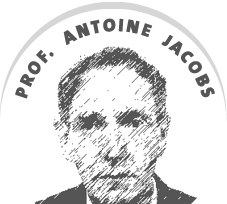Traditionally sector-level collective bargaining has been a bulwark against a race-to-the-bottom in the field of labour law. This bulwark now seems to crumble as a result of the increasing pressure of politicians, economists and employers to decentralise the fixation of employment conditions to company-level.
Source: L. Bellardi et al (Ed.), Spunti di diritto del lavoro in dialogo con Bruno Veneziani, Cacucci, Bari, 2012, p. 159-164.
ILO Convention No. 94 supports the insertion of labour/social clauses in contracts which public authorities conclude with private companies. The EU law is ambiguous on this point. These clauses are to a certain extend recognised in the EU Public Procurement rules, but forbidden by the Court of Justice EC in the Rüffert case as contrary to the EU principle of freedom of services.
European Labour Law – The law on strikes
A Dutch language publication, 2006, which points the reader to two important cases which in those days were pending before the Court of Justice of the EC – the cases Viking and Laval. Both cases were about industrial action against multinational companies making avail of the EC law on free movement of workers/establishment. In the eyes of the trade unions concerned this amounted to social dumping. The author, explaining relevant case law of the Court of Justice EC in comparable cases, analyses that the two cases discussed could lead, either to a priority of liberal market principles over the right to strike or to the opposite.
Source: Sociaal Maandblad Arbeid, 2006-4, p. 135-140
A review (in the Dutch language) of the development of Collective Labour Law in The Netherlands in de period 1995-2005.
Een overzicht van de ontwikkelingen in het collectief arbeidsrecht van Nederland in de periode 1995-2005
In this German-language article, dating back to 1999, the author points at a study released shortly earlier by a group of labour law experts, assembled by the European Commission and chaired by Prof. Alain Supiot: The changing nature of work and the future of labour law in Europe, 1998. He focusses on the Chapter in this report on Employees and Independent Workers. Independent work is on the rise in Europe and the Supiot-Report considers this partly as positive partly as negative. In order to combat the negative side the Supiot Report urges two approaches: energetic requalification of bogus independent workers as genuine employees and the adoption of a set of minimum social rights for genuine independent workers. The author supports these suggestions but proposes some more forceful ways of implementing them.
European Labour Law – European Social Dialogue
This paper was offered to a Conference in Stockholm, 1998. The author critically examines the role which the European Institutions – The European Commission, The European Parliament, the Court of Justice of the EC and the Economic and Social Committee of the EC have played in the European Social Dialogue since the Treaty of Maastricht (1991) and until in 1998 the United Kingdom accepted the Agreement on Social Policy, attached to the European Treaties.
The paper is followed by a summary of the discussion on this paper at the conference.
Source: P. Olsson (Ed.), Transnational Trade Unions Rights in the European Union, Stockholm, 1998, p. 35-43.
